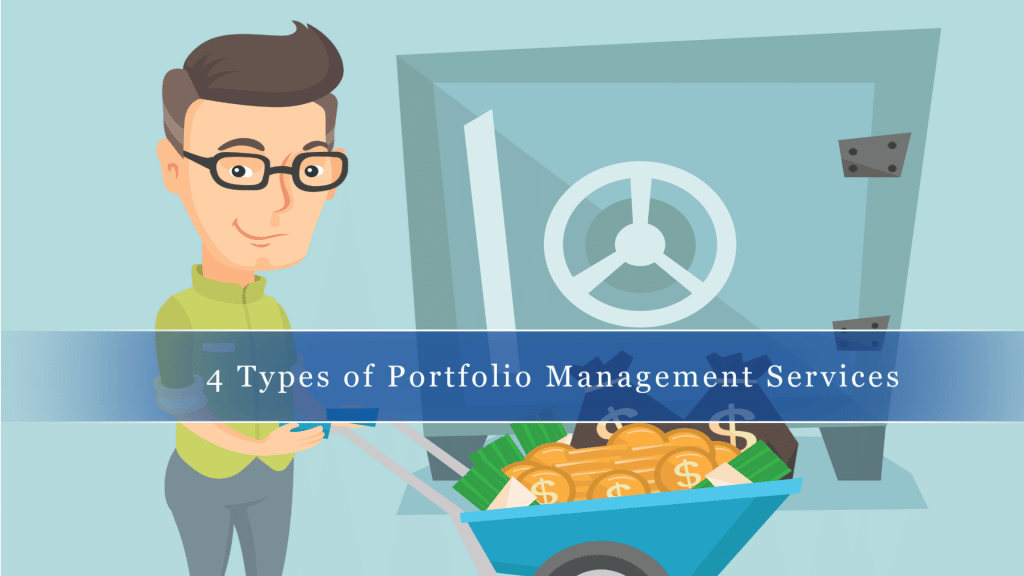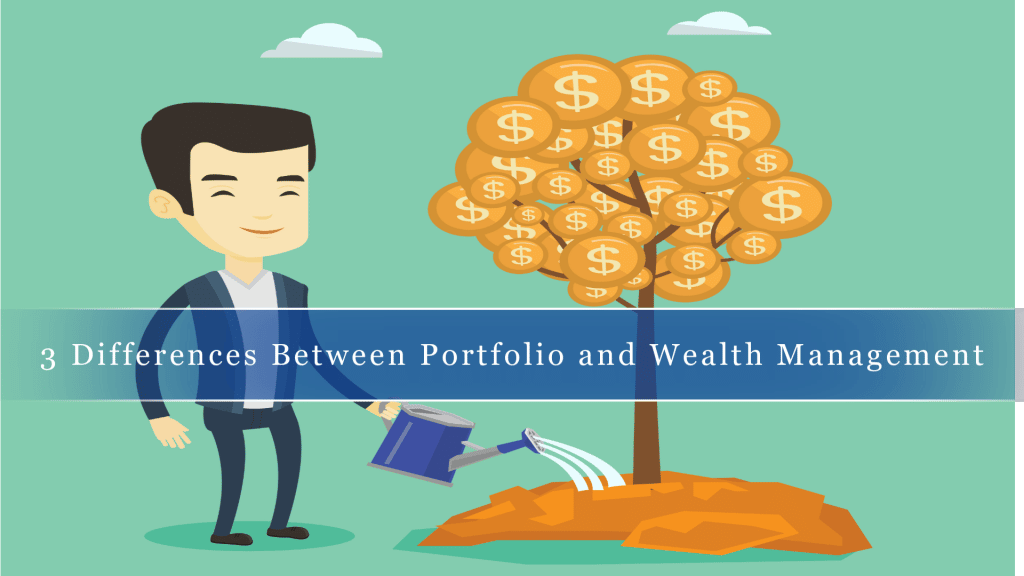Portfolio Management Services
Investing in high-value assets can offer significant growth opportunities for high-net-worth and ultra-high-net-worth individuals. However, higher stakes often come with greater risks. Engaging professional portfolio management services can provide more informed strategies for consolidating your current and future financial needs.
What are Portfolio Management Services?
Portfolio management services involve the strategic selection and continuous monitoring of multiple investments to help you achieve your long-term financial goals. These services are typically provided by experienced financial planners or advisors, such as certified financial planners, who work closely with you to identify and manage investments that align with your objectives.

4 Types of Portfolio Management Services
1. Active Portfolio Management
Active portfolio management requires extensive expertise in financial markets to maximize investment returns. Asset holdings are closely monitored to “beat the market” by buying undervalued investments and selling when values rise. This strategy typically focuses on stocks and carries a higher degree of risk.
2. Passive Portfolio Management
Passive portfolio management suits long-term investors who prefer to let the market trends work over time. This approach typically involves investing in index funds, allowing the underlying value of assets to drive gradual growth without frequent trading.
3. Discretionary Portfolio Management
With discretionary portfolio management, the asset manager makes investment decisions independently on behalf of the client. Since the manager has full authority over investment choices, it is essential to select a manager whose investment approach aligns with your personal risk tolerance and goals.
4. Non-Discretionary Portfolio Management
In non-discretionary portfolio management, the portfolio manager provides advice and recommendations, but final investment decisions are made by the investor. While this allows for greater personal control, it may limit the ability to react quickly to sudden market opportunities or risks.

3 Differences Between Portfolio and Wealth Management
Portfolio management and wealth management share some similarities, but wealth management is broader in scope. A portfolio manager focuses primarily on investment strategies, while a wealth manager oversees comprehensive financial planning, including growing, protecting, and transferring wealth.
| # | Portfolio Management Services | Wealth Management Services | |
| 1 | Focuses on investments | Focuses on overall financial planning | |
| 2 | Manages a portfolio of assets | Manages taxes, retirement, estate planning, and asset growth | |
| 3 | Aims to maximize investment returns | Aims to optimize the client’s full financial situation and achieve long-term goals |
Table of Contents
- What are Portfolio Management Services?
- 4 Types of Portfolio Management Services
- 3 Differences Between Portfolio and Wealth Management
- What Are Portfolios?
- 3 Different Kinds of Portfolios
- Who Manages Portfolio Investments?
- What to Look for in Portfolio Management Services
- How Does Portfolio Management Help?
- Who Uses Portfolio Management?
- What Do Portfolio Management Services Offer?
- How Can Your Portfolio Be Improved?
Your portfolio objectives serve as the foundation for building an investment strategy tailored to your financial situation.

What Are Portfolios?
A portfolio is a collection of financial assets or investments, typically consisting of stocks, bonds, cash and cash equivalents, commodities, mutual funds, and exchange-traded funds (ETFs). Additional assets such as real estate, private investments, high-value items, and even artwork can also be included in a diversified portfolio.
Managing a wide range of valuable assets can quickly become complex. For this reason, many high-net-worth and ultra-high-net-worth individuals prefer to work with a professional, such as a financial advisor or investment manager, who can assess the return-to-risk ratio of the portfolio and help protect and grow its value.
You can choose to work with banks, hedge funds, financial institutions, or independent advisors.

3 Different Kinds of Portfolios
Portfolios can vary significantly depending on the investor’s goals and the financial manager’s strategy. Some investors may even maintain multiple portfolios, each tailored for a specific purpose or investment approach.
Most portfolios fall under three broad categories:
1. Income Portfolios
Income portfolios prioritize generating steady income over achieving capital gains. They are typically composed of coupon-yielding bonds and dividend-paying stocks, offering a more secure and predictable return.
2. Growth Portfolios
As the name suggests, growth portfolios are designed to maximize wealth accumulation. These portfolios often involve higher risk, investing in emerging companies or industries with strong growth potential.
3. Value Portfolios
Value portfolios focus on risk management by targeting undervalued assets. The goal is to purchase investments at a discount, providing a buffer against market downturns and creating long-term opportunities for growth.
Beyond these core categories, portfolios can also be classified as hybrid, aggressive, defensive, equities-focused, or speculative:
- Hybrid Portfolios diversify investments across various asset classes for a balanced approach.
- Aggressive Portfolios pursue higher returns by taking on greater risk, often investing in rapidly growing companies.
Defensive Portfolios prioritize stability, focusing on assets that are more resistant to economic downturns. - Speculative Portfolios involve high-risk investments such as IPOs, companies poised for breakthroughs, or potential acquisition targets.
Your individual goals, risk tolerance, and financial situation will ultimately shape the type of portfolio that best fits your needs.

Who Manages Portfolio Investments?
High-net-worth portfolio management requires both expertise and experience. Portfolio managers specialize in managing investment portfolios, working to maximize capital growth while minimizing risks. If you’re looking to optimize your strategies, our guide explains how to maximize portfolio growth using five critical shifts.
Individual Portfolio Managers
Individual portfolio managers focus on the earning goals of private clients. They assess your financial situation, risk tolerance, and investment time horizon to design and manage a personalized portfolio. These managers also monitor performance and provide regular reports to help you stay informed about your portfolio’s progress.
Institutional Portfolio Managers
Institutional portfolio managers serve corporate or organizational clients. Their objective is to manage and grow the institution’s assets while minimizing overall risk, applying strategies tailored to large-scale investment needs.
Portfolio Management Services
Portfolio management services involve the selection and oversight of multiple investments to achieve your long-term financial objectives. A skilled portfolio manager is detail-oriented, client-focused, and capable of applying a range of strategies across different asset classes. Effective portfolio management ensures your financial goals are pursued thoughtfully, taking into account your investment time horizon and risk tolerance.

What to Look for in Portfolio Management Services
Any portfolio management service you choose should demonstrate expertise in selecting and supervising multiple investments to achieve long-term financial objectives. This is particularly important for high-net-worth and ultra-high-net-worth investors, who often manage numerous high-value assets spread across multiple accounts.
Portfolio managers should be detail-oriented, client-focused, and capable of providing a thorough quantitative analysis of their investment portfolio. They must possess the expertise to apply a combination of strategies across various asset classes to help meet your financial goals. A qualified manager will also consider your investment time frame and risk tolerance when identifying the most suitable opportunities.
If you’re wondering, “How do I find the right portfolio management services?” a good first step is conducting research. Look for a reputable financial firm that serves clients with a financial background similar to yours. For more detailed tips on what to prioritize in a financial advisor, consult our Ultimate Guide.
How Does Portfolio Management Help?
If you’re asking yourself, “Should I meet with a portfolio management services advisor?” it’s important to understand the key benefits it can offer.
Building a well-diversified portfolio enables you to spread your investments across various asset categories, helping to reduce overall risk. Portfolio management services help identify which areas to invest in based on your long-term goals and risk tolerance. A skilled advisor understands how to prioritize assets, track their performance, and adjust allocations as needed to maintain alignment with your financial objectives.
Effective portfolio management can also enhance your returns by applying proven strategies specifically designed for managing high-value assets. Our guide for investors with $10 million or more discusses several of these reliable investment approaches. With a structured and proactive strategy, portfolio management services can support smarter, more timely decisions that drive long-term growth while preserving your active income.
Who Uses Portfolio Management?
Wealthy individuals with high-value assets require a structured and organized approach to managing their investments. Portfolio managers bring the expertise needed to help create strategies tailored to these specific needs.
High- and ultra-high-net-worth investors, particularly those preparing for retirement, often benefit from portfolio management services. Our guide, The Art of Protecting Ultra-High Net Worth Portfolios and Estates—Strategies for Families Worth $25 Million to $500 Million, explores how thoughtful portfolio adjustments can help secure your assets for the future.
Even if you have sufficient wealth to sustain your retirement, preserving your standard of living requires proactive planning. Factors such as market volatility, inflation, taxes, changing interest rates, and unforeseen liabilities can all impact your financial security. Portfolio management offers a way to protect your future assets by taking strategic, calculated steps today.

What Do Portfolio Management Services Offer?
Portfolio management services apply a range of methods and principles to manage asset allocation and evaluate portfolio performance and returns. Some of the techniques used include dividend weighting, capitalization-weighting, modern portfolio theory, equal weighting, and the value-at-risk model.
Portfolio managers begin by determining each client’s objectives and investment goals to select the most appropriate asset classes, such as equities, real estate, or bonds. They then strategize asset allocation by setting target weights for each investment and rebalancing periodically to address deviations in expected returns, providing enhanced control over risk management.
Portfolio management services can also offer both active and passive management approaches. Passive management typically comes at a lower cost because it mirrors a specific market index rather than actively seeking market opportunities.
Conversely, active management requires constant monitoring of market trends, economic shifts, and policy changes. Active managers use in-depth research and market forecasting expertise to determine advantageous times to buy or sell investments, aiming to achieve higher returns.
Passive investing may be more suitable for investors with a lower risk tolerance, focusing on tracking broader market performance through diversified, long-term strategies.

How Can Your Portfolio Be Improved?
Ideally, a well-structured portfolio should reflect an appropriate level of diversification and clearly define your risk tolerance. Your return objectives, time horizon, and any financial constraints—such as tax considerations, legal circumstances, and liquidity needs—should also be explicitly outlined.
That being said, there are always steps you can take to enhance your portfolio’s performance:
1. Asset Allocation
Some assets carry greater volatility than others, making strategic asset allocation critical. Individuals with more aggressive portfolios may lean toward higher-risk assets like growth stocks, while more conservative investors often prefer stable investments such as bonds. A portfolio manager can guide the allocation process based on your risk appetite and long-term goals.
2. Diversification
Diversification is a key element in reducing portfolio volatility. A portfolio manager can help you spread investments across various asset classes, minimizing the risks associated with relying heavily on a single investment. A well-diversified portfolio can better maintain a stable risk-to-reward ratio over time.
3. Rebalancing
Regular portfolio rebalancing is necessary to maintain your original target allocations for risk and return. Rebalancing often involves selling assets that have appreciated significantly and reallocating proceeds into lower-priced or underweighted assets.
Investment professionals typically recommend consistent rebalancing and diversification to optimize long-term performance and help you achieve your financial objectives.

Conclusion
Investment portfolios are carefully tailored to each investor, reflecting their financial goals, risk tolerance, and diverse range of assets. Enlisting the help of a portfolio management service can play a critical role in strengthening and enhancing your long-term wealth strategy.
Experienced portfolio managers and financial advisors understand how to align your investment profile with evolving market opportunities and personal objectives. If you are seeking refined strategies to optimize your financial future, now is the time to take the next step:
Building a thoughtful, well-managed portfolio today can help secure a stronger, more resilient tomorrow.
